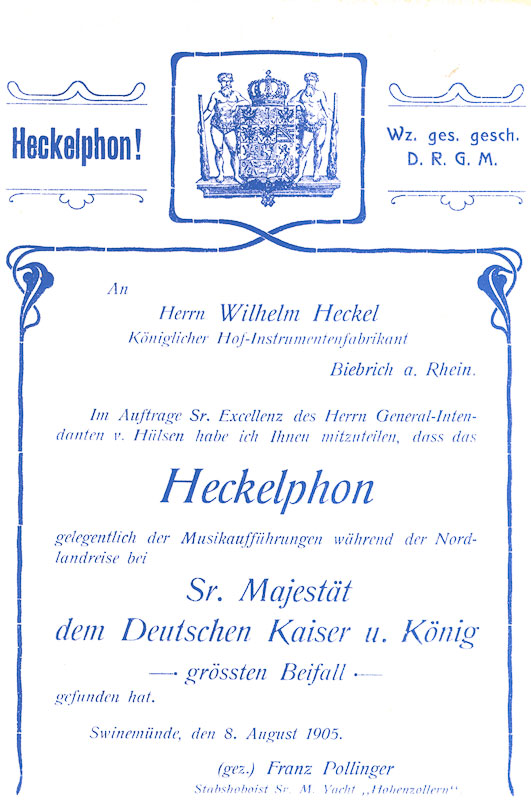In September 1904, after a long time in development, the latest invention of Wilhelm Heckel, the heckelphone, was presented for the first time. This instrument represented Wilhelm’s most successful achievement. The development of the heckelphone went back to the suggestion of the composer Richard Wagner. In 1879, at a meeting with Wilhelm Heckel, he longed for a double-reed instrument that sounded one octave lower than the oboe and at the same time had the soft, yet powerful sound of the Alpenhorn.
Presentation of the Heckelphone
Unfortunately, Richard Wagner did not live to see the final completion of this instrument. Since there were no compositions for the heckelphone in the beginning, composers now had to be found who were interested in the instrument and who would create new works for it. Here, good contacts with important artists paid off. For example, the instrument was used by Richard Strauss in Salome (1905) and Elektra (1909), and also in pieces by Paul Hindemith and Max von Schillings.

Praise for the Heckelphone